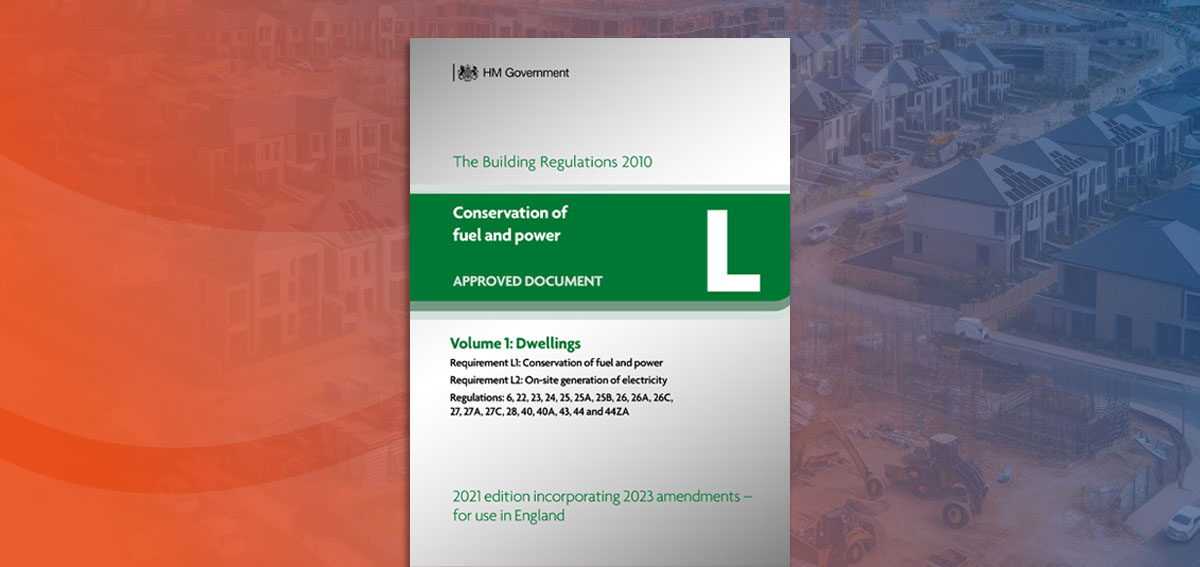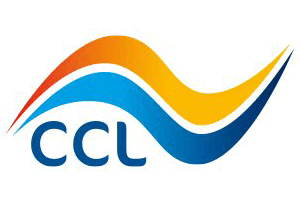The New Era of Part L Regulations

The New Era of Part L Regulations
Post by CCL Marketing Team | 22/02/2024
5-Minute Read
UK Building regulations play an important role in steering the course towards a greener future for construction and, despite recent announcements risking delays in our journey to net zero, the updated standards set out in Part L of the Building Regulations for energy performance are now in force.
Part L addresses the conservation of fuel and power in new buildings in the UK. Over the last few years, this part of the regulation has undergone significant changes to improve energy efficiency and reduce carbon emissions, with a particular focus on the roles played by solar energy and air source heat pumps in shaping the future of greener construction. Whilst each of the devolved governments is responsible for its own building regulations, they share many of the same updates. The June 2022 amendments for England included a mandate to enhance the current minimum standard for carbon emissions by 31%; for Wales, the figure is 37% and Scotland 32%.
The Impact on Solar PV
For those of us operating within the renewables sector, the mandated approach to carbon reduction has undoubtedly strengthened demand for solar PV installations in the new-build sector. Solar PV is widely available; it’s commonly accepted as a mature technology; it requires very little input from the home or system owner and maintenance is minimal. With the grace period for the new Part L very much over, and the UK Government reaffirming its commitment to a target of constructing 300,000 homes per year by the middle of this century, manufacturers and installers are now seeing substantial growth, with a particular focus on brands that lend themselves to new build roofs.

Image courtesy of Viridian Solar
Roof integrated solar PV
For new build properties, in-roof solar PV is the logical choice when it comes to mounting solar PV modules. Roof integrated solar requires fewer tiles and, since the panels are set lower down into the roof, low-profile, solar arrays have the added advantage of looking more like an intentional part of the building. Since the panels are integrated into the roof structure, wind resistance is greater, birds are much less likely to nest under the modules, and studies have shown that the reduction in energy yield due to heating from a roof integrated PV system, is very small.

Viridian Solar’s Clearline Fusion is a system of solar PV modules and solar flashing kits that uses a sleek, invisible clamping system and flush, push-fit connections for secure, weather-tight fixings. Clearline Fusion provides a clean aesthetic for new homes and works with both slate and tiled roofs.

The GSE universal mounting system for roof integrated panels enables a solar roof to be created using standard PV modules. This economical BIPV (building integrated photovoltaics) system is compatible with the majority of the framed modules on the market.
How Air Source Heat Pumps (ASHPs) meet the new requirements
Another aspect of the updated Part L regulations relates to heating, encouraging the replacement of conventional fossil fuel-based heating systems with ASHPs.
Removing fossil fuels, improving efficiency & lowering flow temperature
With electricity rather than gas as the power source, ASHPs meet the requirement to remove fossil fuels. In comparison to gas boilers with a typical Coefficient of Performance (COP) of 0.9, heat pumps can attain a COP exceeding 2.0 for hot water and 3.0 for space heating. New heating systems are now also limited to a maximum flow temperature of 55°C, in contrast to the previous standard of 80°C, making air source heat pumps (ASHPs) particularly attractive, as they are designed to operate efficiently within the 55-degree temperature rating.
This increase in efficiency, coupled with their capability to heat homes without relying on gas, positions ASHPs as an obvious preference for new homes complying with Part L. At CCL, we stock a wide range of heat pumps, cylinders and accessories from Hitachi, Mitsubishi Electric, RIELLO, Samsung, Telford and Vaillant.
Big brands making the move to renewable energy
Many of the traditional heating brands have already introduced heat pumps to their product portfolios. Vokera by Riello, a well-known name in the heating industry, has recently been acquired by Carrier, and has expanded its offering into the renewable energy market with the NXHM range of heat pumps. Manufactured in Europe to high standards, the Riello heat pump offers a cost-effective and robust solution that presents many benefits. The overwhelmingly positive feedback that has been received from installers has been centred around their network of support and technical backup. Cleverly utilising and re-training their gas installers from the Vokera side of the business has allowed Riello to offer a support team that is one of the best in the industry, seamlessly transitioning from traditional fuel to renewables.
Quieter installations
It should be acknowledged that Air Source Heat Pumps have suffered from a certain amount of bad press – mostly due to misunderstanding of the way they operate. One area of concern has been around noise. Manufacturers are actively addressing the demand for quieter installations and are striving for lower dB levels from their external units. As an illustration, our manufacturing partner, Samsung has introduced the Quiet Monobloc Heat Pump with single and three phase models ranging from 5kW to 16kW, boasting a decibel level of 45 dB(A) 1m from the fan . To give some perspective, this range of Samsung air source heat pumps is 5dB quieter than a tranquil office or library, and just 5dB louder than the sound of light rain.
Are heat pumps noisy? Read more about ASHP noise.
Building for the Future
The update to Part L marks a significant shift towards a more sustainable future in construction. With the Future Homes Standard anticipated in 2025, the integration of solar energy and air source heat pumps are two pivotal strategies in meeting the revised regulations and objectives. As the construction industry adapts to ongoing changes, buildings are positioned to achieve improved energy efficiencies, lower carbon emissions, and substantial savings for their owners. Meanwhile, installers in the renewables industry targeting the new-build sector, are positioned to encounter a substantial and sustained wave of demand for their services.


